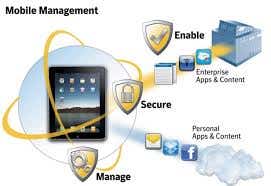A lot of enterprises today encourage employees to bring their own devices to work, especially smartphones and tablets. As more people prefer to use these devices to transact businesses, it is important to consider various factors tied to using them, especially the ones that concern the security of sensitive corporate data. Companies that are keen on properly utilizing information technology to realize their goals and objectives should be accorded the convenience they deserve by using MDM (Mobile Device Management) systems, as opposed to having them worry about the complexities associated with managing them. There are quite a number of MDM systems in the market today, but you must be careful when making your choice. Here are some important features that the best mobile device management systems should have.
Device Enrollment
Device enrollment should be thorough, but effortless. One must be able to swiftly stage the device with the appropriate configurations, regardless of the number of expected deployments. Directory-based user authentication is very important because it establishes the very first security layer. The end user license agreements should be clear and easy to understand for additional accountability and visibility. The enrollment process has to be comprehensive, according to the business needs.

Security
In business, data security is paramount, irrespective of company size. In as much as most MDM systems are password-protected, companies that are keen on safeguarding their security can always work on ways to bolster it. Ideally, the system should have various security features such as passcodes and encryption. You don’t want someone snooping around your databases, especially if you cannot control the users – some of which may be working remotely. Data loss can be prevented through local data backups. Furthermore, you should find a system that lets the administrator block some features on the devices. The company should decide what measures are to be used, but be careful not to complicate the device’s operations.
Ease of Use
Upon deployment, users shouldn’t find it difficult to use their devices. Make it easy to update configuration profiles, request for information, and disconnect devices, among others. Management systems are supposed to make life easier.

Remote Configuration
Is it possible to share documents or files remotely? Are there some resources that can be made available on a remote network? This might sound like asking too much, but most people dislike the idea of operating behind a traditional working desk. If you can access all the information you need from home, you can proceed and work as you wait for the traffic to ease. It is even better if some settings or privileges can be given to specific groups of people.
Easy to Monitor
Device information should be easy to track in real time, and access to some information should be controlled. Some information should only be available to a certain group of people. Other things you might want to monitor include available memory space, and installation or deletion of new applications. In short, the admin can get useful information without having to ask the users to supply the same.
Finally, you should consider the level of available support, which should vary depending on the level of technological understanding of the users. Mobile device management systems are quickly being picked up, but you have to be cautious when investing in them.